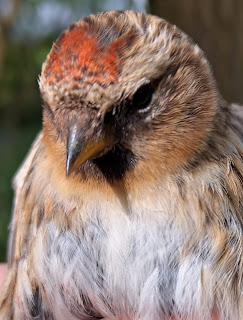In my last post I mentioned that we had had controls of Siskins from abroad--now we have had feedback on those controls.
The German bird was originally ringed on 7th March 2023--there have only been 56 records of German Siskins found in the UK.
The Czech Republic bird caught on the same day had been ringed on 9th April 2023, there have only been 7 Siskins found in UK from there.
The Lithuanian bird was ringed 5th April 2021,there have only been 12 birds caught from Lithuania.
Close by ( around 2 miles) at one of our other sites we had a bird originally ringed in Poland, from where only 8 birds have ever been recovered.
SO--4 eastern European ringed birds within 1 week was an incredibly significant catch compared to the number of bird recovered here from those countries in over 100 years of the ringing scheme!!
It remains to be seen how many of the around 2000 Siskins we have ringed over the last month or so will be controlled in those same countries, where, presumably these birds will be returning to breed.
On a more domestic note--activity at our feeders is predictably dropping off as birds move out to breed--and summer visitors arrive back from wintering in southern countries.
This morning I had a male Blackcap, which showed an interesting feather feature......
It's often very difficult to age birds at this time of year--but this Blackcap showed a distinctive group of feathers on the wing.
You can see from the blue bar that the feathers under the bar are slightly browner than the grey feathers to the left of the bar. It actually was even more obvious on the real bird --the grey feathers are adult and the browner ones are remnant juvenile feathers so we can be confident this bird was reared in 2023.
More of a curiosity was this Goldfinch which Paul caught this morning...
Although rather more common in Redpoll, this Goldfinch is showing some gold feathers in the rwed head. It's probably a simple mutation. but I really have no further details than that.









